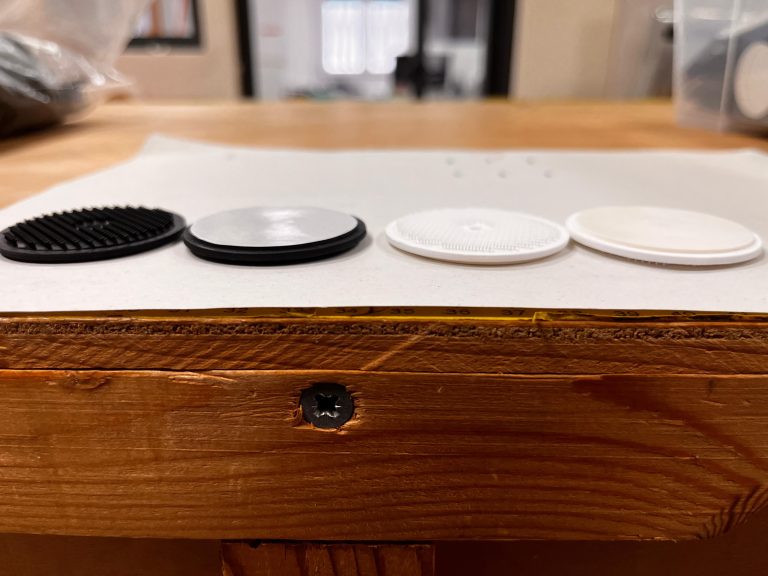 A recurring problem In Inspecting ships Is verifying the condition of the piping Installed on board or on oil platforms. Networks of piping on ships and offshore platforms are highly developd and manual Inspection takes a great deal of time.
A recurring problem In Inspecting ships Is verifying the condition of the piping Installed on board or on oil platforms. Networks of piping on ships and offshore platforms are highly developd and manual Inspection takes a great deal of time.
Moreover, the areas to be Inspected are often narrow and hard to reach for the Inspector.the use of self propelling units to support the Inspection can make the Intervention easier. Here we describe a proposal developed In the dreams laboratory of the Polytechnic School of the University of Genoa.
Systems for distributing fluids on ships and offshore platforms form a complex network of piping that runs right through the vessel, conveying steam, water, fuel oil and air for a whole series of services. Cooling or lubrication of machinery, supplying water for the various services and handling discharges, the supply of water and extinguishing agents to put out fires, draining flooded compartments or oil bilges, transferring masses for trim or listing and obviously the loading and unloading of liquid cargoes are just some examples. The correct working of the piping systems on board is fundamental for ensuring the safety of the vessel. For this reason there are inspection procedures to be carried out in line with the programmed maintenance policy of the vessel, as described in the PMS (Planned Maintenance Systems), which collect and analyse a multitude of data to optimise the carrying out of programmed and extraordinary maintenance. On ships that do not have the systems, the classification registers recommend in any case inspecting piping every six months and, if this is not possible, at least at limited intervals. In the maintenance of piping in ship systems there are two distinct categories of inspection, one the verification of the external condition of the piping and the other checking for leaks.
Inspections for leaks
Inspections for leaks are made along the full length of piping. Leaks needed to be located precisely so repairs can be carried out. In systems carrying gaseous fluid such as compressed air leaks can be identified also by a hissing sound and a drop in the pressure inside the piping. Identifying leaks by spreading a substance on the piping that forms bubbles is today normally replaced by ultrasound searches. In isolated piping leaks are shown by liquid on the covering. But the presence of damp insulating material doesn’t necessarily mean the piping is damaged. It could simply mean that a nearby pipe is leaking and has dripped on to the other one.
Investigation techniques
Investigation techniques include x-rays, where the part to be inspected is positioned between a source of radiation and a radiographic contrast. The radiation passing the component to be tested reaches the contrast film, creating an x-ray of the component. The different shades on the film can highlight differences in the thickness of the component analysed and show whether there are any internal defects in the material. Ultrasound tests are used to identify defects inside the material and to measure the thickness of the component. Here soundwave said frequencies between 1 MHz and 10 MHz are used.
Inspection aided by self-propelled units
The considerations outlined above show how many problems there are in inspections, even if we limit the analysis of the problem to the inspection of piping. The development of pipe networks on board or on platforms follows very different routes depending on the space available and the requirements of the system. It is very common in the sector to find long horizontal or vertical stretches of bundles of pipes. In these stretches inspection is repetitive and takes a long time to carry out. It can thus be a good idea to have self-propelled, autonomous devices to help the inspector examine these parts of the system, using manual analysis for stretches where the automatic unit would find it difficult to work. The ideas seems interesting above all with automatic solutions with limited cost and very simple construction. The topic of pipe inspection has been developed by the author for some time with both theoretical and experimental analysis. Below is a summary of some of the results, concerning to self-propelled pneumatic units: one for carrying out inspections inside the piping, and the other for inspecting the outside.
Internal inspections
The subject of internal inspection was tackled experimentally by producing a self-propelled unit that was conceptually very simple and emulated the movement of the caterpillar. A fluid muscle was used to generate the single step and two deformable terminals were attached to the two metallic extremities of the muscle to anchor them to the internal surface of the piping and permit movement in two directions.
The deformable chambers are shaped on the outside to optimise adherence to surfaces. The first prototype is 350 mm long and can operate in various pipe geometries. Experiments were mostly carried out on pipes with a circular section from 100 to 200 mm internal diameter and some square and rectangular section geometries with a similar internal area. The first version of the robot was tested in lengths of straight piping but also in 45° and 90° curves, with the piping horizontal, sloping and vertical. The initial results were not completely satisfactory in curves: there were sporadic and nominalist’s bends in the walls of the muscle that compromised movement. In later versions of the prototype the problem was completely solved; it was essentially caused by the ratio between the diameter of the muscle and the radius of curvature of the path to be followed. It was also related to the pressure in the chambers and in the muscle.
The second problem was solved by seeking a correct balance of these pressures, obtaining an optimal condition with maximum pressures of six bar and a 25 mm step for the unit. The first problem was tackled and solved by modifying the lengths of the deformable extremities, reducing the diameter of the muscle and modifying the transverse stiffness of the muscle by placing in it a plastic tube, also used to supply one of the extremities.







